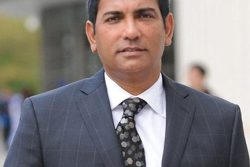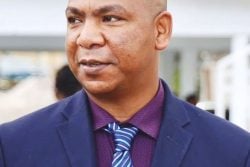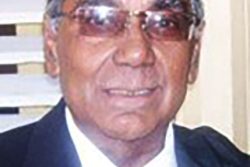Late last year, three Guyanese-American siblings won the first place in an Innovating Justice Challenge for the police rating and review mobile and web app they had created and entered into a worldwide competition. Asha and Caleb Christian and their older sister Ima, a Computer Science major at Stanford University were awarded €20,000, for their ‘Five-O’ app after pitching it to a panel in The Hague. According to information they planned to use the funds to upgrade the app, which aims to help make communities safer. By the end of last year they had received requests for it from Brazil, Russia, the UK, and South Africa.
With their initiative, these teenagers have become part of a global group of like-minded peers, who use technology for the greater good and are set to be the movers and shakers in this brave new world we must all now live in.
In 2014, Shubham Banerjee, then 12 years old, developed a low-cost Braille printer using his Lego kit. Banerjee’s interest in the project, which was initially a school-based one, was sparked after he asked his parents how the blind read and was told to research it. Shocked to find that Braille printers (embossers) cost some US$2,000 each, he set about finding a cheaper, simpler way and came up with a low-cost, lightweight model that would cost about US$350. He has since launched his own company called Braigo—taken from the words Braille and Lego.
In 2012, Hungarian Balázs Zsombori then 17 developed PictoVerb, a software programme which generates grammatically correct sentences through the touching of pictograms on the display of smartphones and tablets. The software is so simple that its users do not need to be able to read and write. Zsombori’s motivation was an acquaintance, who became mute after being stricken by a disease and thereafter struggled to communicate. He, like the Christian siblings, won awards: first prize in the Youth Science and Innovation Talent Search Competition in his home country and then third prize at the European Union Contest for Young Scientists. Since then the software has been tweaked to include different languages and to cater for children as well as adults. It has attracted investment as is currently accessible on smartphones and tablets.
Last September, a 14-year-old boy, Ahmed Mohamed, was arrested at his school in Texas, USA after he took a homemade clock, a science experiment to showoff to his teachers and it was claimed that it was mistaken for a bomb. The arrest—he was subsequently released and his clock later returned—caused a furore around the world and the teen and his family then moved to Qatar after he was offered scholarships for school and college. Not only was there outrage that Mohamed’s arrest was a classic case of Islamophobia, but there was concern that the result of the fallout could curb children’s creativity.
The UNICEF State of the World’s Children (SOWC) 2015 report, which featured the stories of Banerjee and Zsombori, notes that, “Children and young people are natural innovators. They are also acutely aware and deeply concerned about the challenges facing their communities. Nurturing their creativity and critical thinking is key to helping them develop their potential to address these problems…”
Nearly three years ago, a group of students from the Zeeburg Secondary School on the West Coast Demerara, in response to a huge challenge facing them and their community, developed a shrimp processor. For decades, Zeeburg fishers and their families have used the seawall not far from the school to dry shrimp presenting a significant air pollution problem.
Complaints to the Neighbourhood Democratic Council (NDC) saw numerous attempts at a solution, but this remained elusive. The NDC could not countenance forcing the ceasing of operations as this would adversely affect scores of persons and their families.
In 2013, the Zeeburg students built the shrimp processor, with which they entered and won the Guyana leg of the Sagicor Visionaries Challenge. The challenge which involves Science, Technology, Engineering and Mathematics (STEM), is held by the Caribbean Science Fund (CSF), Sagicor and Caribbean Examination Council in conjunction with Ministries of Education in the region. It targets high school students, who are encouraged to identify a challenge facing their school or a school of their choice and using STEM, develop effective, innovative and sustainable solutions.
The Zeeburg students went on to win the prize for the best project plan and design at the final in Barbados. However, unlike their peers cited above, there has never been any indication that start-up funds were found for the production of shrimp processors for sale to Zeeburg fishers. So while these teens may have found a solution it did not necessarily translate into the eradication of the problem.
In the SOWC 2015 report, UNICEF notes the importance of providing equal opportunities to children, particularly those who might be at a disadvantage because of “gender, ethnic minority status or poverty,” so that they could also learn and participate. It is equally important to provide the means for their contribution. There is nothing that dries up creativity quite like the inability to allow for its growth and development.








